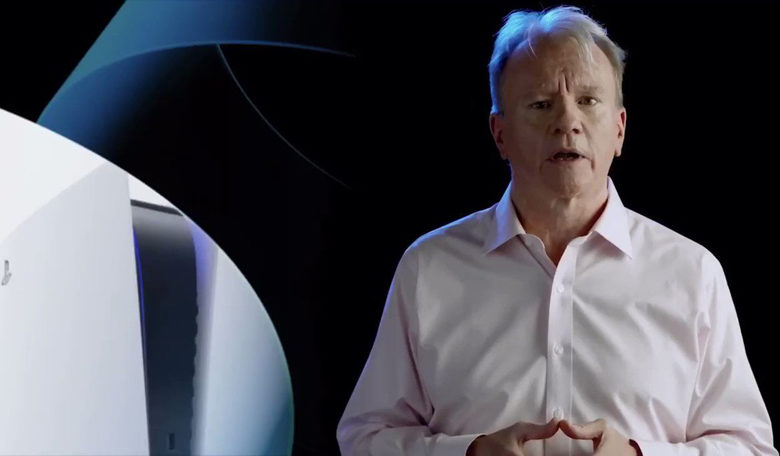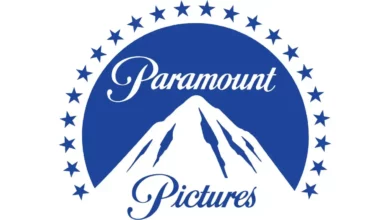Klartext: Sonys Jim Ryan über First-Party-Spiele, Gamepass, PSVR2, Netflix & mehr

In den letzten Tage wurde eine Q&A-Runde von SIE-Präsident Jim Ryan mit Investoren aus dem Jahr 2022 veröffentlicht, die einige interessante Punkte wie potenzielle Studio-Käufe, Sonys geplante Live-Service-Titel, die PSVR 2, Bungie, Gamepass, Netflix und Sonys Firstparty-Portfolio beihaltet.
Verdoppelung des First-Party-Umsatzes
Ryan gibt an, dass Sony davon ausgeht mit den zehn geplanten Live-Service-Titeln in den kommenden Jahren eine Verdoppelung des First-Party-Umsatzes erreichen zu können.
Narrative First-Party-Spiele weiterhin als Fundament
Auch wenn Sony nun intensiv in Live-Service-Titel investiert, sollen die bei PlayStation-Fans beliebten narrativen First-Party-Spiele wie God of War oder The Last of Us weiterhin das Fundament von Sonys First-Party-Output darstellen. Ryan geht davon aus, dass es Sony auch hier gelingen wird, die Umsätze weiter zu erhöhen.
Bungie soll das Risiko minimieren
Was die Live-Service-Projekte angeht, soll Bungie, die in dem Bereich über viel Erfahrung und Wissen verfügen, das Risiko für Sony minimieren, weshalb das Unternehmen sich auch dazu entschlossen hatte, den Destiny-Entwickler zu übernehmen.
Weitere Übernahmen
Wie angekündigt, plant Sony in Zukunft weitere Entwickler zu übernehmen. Sony sei jedoch darauf bedacht Entwickler und Studios in den Bereichen zu übernehmen, in denen das Unternehmen derzeit nicht „stark“ ist. Wie bei Service-Games (Bungie), sagte Ryan, dass Sony auch Ambitionen in anderen Bereichen wie Mobil-Games bereits angekündigt habe.
Activision zu groß?
Ryan gibt an, dass Activision ein langjähriger Partner ist, den man gut kenne. Betrachtet man allerdings die Kaufsumme von 69 Milliarden US-Dollar (Microsoft-Activision-Deal), glaubt Ryan, dass die Investition von der 3,6 Milliarden US-Dollar-Übernahme von Bungie für Sony am Ende rentabler sein wird.
Gamepass ist nicht beliebt bei Publishern
Ryan betonte abermals, dass Publisher Abonnement-Dienste wie Gamepass nicht mögen, da diese auf Branchenebene wertschädigend seien. Zudem hätte er persönlich damit gerechnet, dass Microsoft mittlerweile weitaus mehr Abonnenten haben würde als sie tatsächlich haben.
PSVR 2 und Metaverse
Auf das Metaverse angesprochen sagt Ryan, das Sony mit dem PlayStation Home für die PS3 hier seiner Zeit wahrscheinlich 10 bis 15 Jahre voraus war. Sony habe aber ein paar Projekte am Laufen die bei der Schaffung einer Art „spielähnlichem Metaversum“ derzeit sehr spannend sind. PlayStation könne hier möglicherweise auch mit anderen Teilen von Sony zusammenarbeiten. Ryan glaubt auch, dass die PSVR 2 in der Zukunft „mittelfristig“ eine Rolle spielen wird.
Netflix als Konkurrenz?
Netflix Nutzung ihres IP-Portfolios mit spielähnlichen Anwendungen, ist laut Ryan ziemlich intelligent. Allerdings sei der Aufbau einer Spieleplattform sehr schwierig und das Geschäft mit der Entwicklung von Spielen extrem teuer. „Wenn Netflix es ernst meint und eine kritische Masse anstrebt, müssen sie ihr Geschäftsmodell ändern.“
Hinweis: Die folgenden Fragen und Antworten wurden vor der Veröffentlichung durch Sony redigiert.
Q: You mentioned that you’ll be launching 10 new games, and your goal is to double your first party revenue stream within four years. So, out of these 10 games, how much will come from your existing titles? JR: It’s a mixture. I’m not going to go beyond anything that’s already been announced, but it would be fair to say that when you look at our IP portfolio and when you think about the biggest names in there, having those games break out from the constraints of the console model is a very significant prospect for us. You can assume that a significant portion of our existing AAA IP will find its way into a live service game. We have partnerships under development with people who we’ve already worked with and with some new partners, who will bring new IP to PlayStation and there’s even one or two things that are completely new that are coming from the ground up. But I think it’s the first category that really excites us because those games leverage something that we already know resonates massively with the gaming community. It’s an untapped opportunity for us. And if we do it right, the potential upside for SIE will be enormous. Q: In order to double your first party game revenue, how many of the 10 new games need to be big hits? JR: It would be naïve for us to assume that all 10 will be massive successes so that is not a necessary condition for us to double first party revenues. That is certainly not what we’re assuming. Clearly, the distinction between a hit and not a hit is not a binary one. And don’t forget that as we do this, we will continue to publish the games that have served us so well over the years. These first person, graphically beautiful narrative rich games will continue to be the bedrock of our first party publishing business. Q: What would be the ideal mix for your first party games going forward? How much will be live games vs traditional first person narrative-driven games? JR: We will continue to make first person games like we always have, and we expect those to have slightly greater sales and profitability, reflecting our confidence in the long-term installed base of PS5, as well as the fact that those games will make their way to PC. So, we think that the pie from those games will grow, but that growth will be incremental in nature. We think the live service games will build on that foundation and take us to another level. Q: Bungie has 1,000 employees and 20-30 years of history making games. You’re counting on a big contribution from them to help you with these 10 games and help you to allocate capital effectively as well as avoid making mistakes. Is that the strategy? JR: Yes, it is. I’ve been talking a lot over the past couple of years with our publishing partners, many of whom are slightly farther down the road than we are in terms of live service publishing. What they all have in common is that they’ve made a lot of mistakes on that road. And I think one of the benefits of being a fast follower in this space is that if we’re intelligent and thoughtful, we can learn from those mistakes. But these partners can be viewed as our competitors and there’s a limit to what they will share. Having a premier live service publisher within the group who is extremely keen to collaborate with Sony massively increases our ability to learn and our ability to avoid the mistakes that others have made. Q: You’ve made it very clear that there’s going to be more acquisitions to come. What is an ideal acquisition target and what are you hoping it will help you achieve? JR: I think an ideal acquisition target has to help us deliver on our strategies in a way that we’re not capable of doing on our own. And when I look at our portfolio of studios and our publishing capabilities, we need help in the areas in which we’re not strong at present. We aspire to grow our community, grow engagement with our games, grow the number of people who are playing those games, grow the amount of time people are spending on those games, move across to PC and mobile, and grow the number of people playing with each other. It’s in these spaces, where we don’t have expertise and presence, we need to build expertise. These are some of the reasons behind the acquisition of Bungie. We have publicly stated ambitions in the area of mobile. That’s part of game development that we’ve not been present in any meaningful extent. So, you can assume that we have an interest in acquiring development knowledge and management expertise there. Q: Did you look at Activision as a target? Was it too big to buy? JR: We know Activision extremely well. They are probably one of our principal partners. In terms of deployment of Sony’s capital, when you look at 69 billion dollars for Activision compared to 3.6 billion dollars for Bungie, we believe that Bungie can give us way more than a 69 billion acquisition of Activision. And that’s before considering the relative value of that particular transaction. Q: The Game Pass business model appears to have some challenges, and Microsoft appears to be losing a lot of money on it. Because the AAA publishers spend $100 mil or more on developing titles, they are happy to sell it for $70 on PS5. The subscription model is more challenging for them. Given that environment, will Microsoft need to provide minimum revenue guarantees if they want those titles on Game Pass? Or do they need to go out and buy more assets like Activision to put on their platform? Are those the two options for Microsoft when trying to gain critical mass and support from the AAA publishers for Game Pass? JR: I can say with a very high degree of certainty that Microsoft has tried the first path and it did not work at all. That has driven them to make the large acquisition. I’ve talked to all the publishers, and they unanimously do not like Game Pass because it is value destructive, not only on an individual title-basis, but also on an industry level. The recent number of subscribers that Microsoft announced on January was 25 million. I am sure everyone has their own views on this, but I personally was expecting a larger number given all the money they have spent. We have close to 50 mil PS Plus subscribers. We believe we have a meaningful subscription service. Q: What is Sony’s metaverse strategy? How big of a role will VR2 play there? Is it for gaming only, or will it be for something broader in terms of applications and markets? JR: We’re approaching metaverse conversations through 2 lenses. First is as a platform holder. We had something called PlayStation Home for the PS3 and that was a very early manifestation of a platform metaverse. It was probably 10- 15 years ahead of its time. The second is from the studio perspective. We have a couple of projects underway that are very exciting for us, in terms of creating some sort of game-type metaverse which can possibly have collaboration with other parts of Sony. Sony’s entertainment assets have huge potential in the metaverse area. As for VR2, we see it as having a role down the road, more in the mid-term. Q: Netflix upended the industry in TV and movie content. They want to give free content at no extra charge. I am curious how you think about Netflix’s emerging presence in the gaming space. Is Netflix something you have to think about as a potential competitor? JR: Just given the nature of Netflix, it is important to watch them carefully. Some of what they’re doing, such as leveraging their IP portfolio with game-type applications is quite smart. | contrast that with what the other huge tech companies tried to do and failed. Building a gaming platform is very difficult, but, I think in the long-term, what they’re doing is interesting. We need to be careful with them. The business of making games is an extremely expensive one, and at some point, if they’re serious about it, and if they aspire to accumulate critical mass, I think that they will have to change their business model. The current model will be challenging.p;




